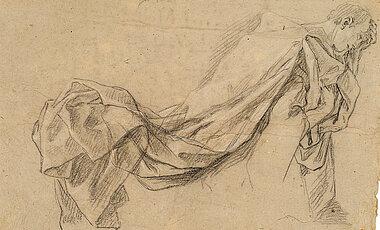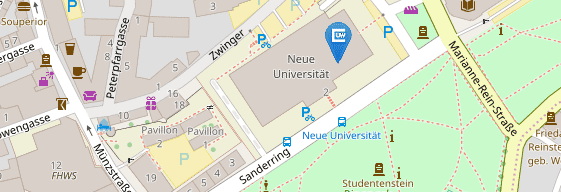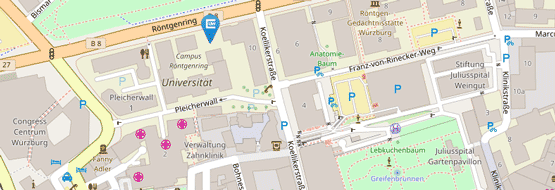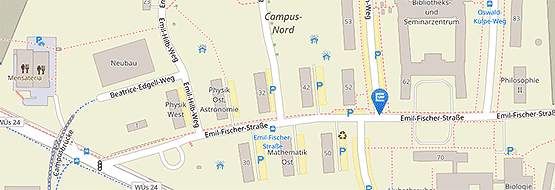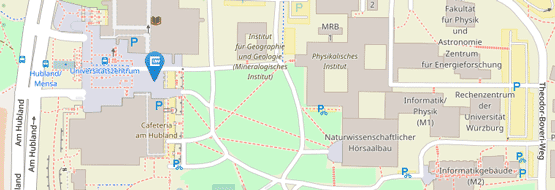Drawn Diversity - Concentrated Research
11/25/2025Italian drawings from the collection of its namesake are on display at the Martin von Wagner Museum for four months. The exhibition is part of an international research project.

Martin von Wagner (1777-1858) was all sorts of things: Painter, sculptor, art agent, art historian - and collector. Of the 8,000 or so drawings that he bequeathed to the university in his home town of Würzburg at the end of his life, the Martin von Wagner Museum still holds over 5,000, despite losses during the war.
2,104 of these are by Italian draughtsmen from the Renaissance, Baroque and Neoclassical periods. A selection of 77 sheets is now being presented in the museum's "Small Gallery" under the title "IDEA AND LINE | Italian Drawings from the Martin von Wagner Collection". The special exhibition is basically a side show of a much larger endeavour. However, it does provide an insight into a large-scale cataloguing project.
A Presentation of the Diversity of Italian Draughtsmanship
Years ago, Professor Eckhard Leuschner, who holds the Chair of Early Modern and Modern Art History at the University of Würzburg, put together a team of 23 experts from Germany, Italy, France, England and the USA. Their task was to compile a catalogue of around 140 drawings from the Martin von Wagner Museum from all relevant art landscapes in Italy. "The main aim was to achieve a balanced representation of the diversity of styles, schools, techniques and functions that characterised Italian draughtsmanship over four centuries," says Leuschner.
However, the intention behind the scholarly cataloguing of the sheets went even further. Martin von Wagner's collection contains only a limited number of works by leading Italian masters - even if names such as Barocci, Bernini or Tiepolo are not missing; around three quarters of the drawings are by lesser-known artists.
Yet it was precisely these works, which had previously received little or no attention, that were the focus of the cataloguing work. Leuschner recognises the special scholarly value of the catalogue: "For the first time, some material is becoming accessible that would hardly ever find a place in overviews of Italian drawing." A nice side effect: the museum is pleased about numerous new attributions of previously anonymous works.
Two-Volume Publication to Accompany the Exhibition
This field of research has always been dominated by Anglo-Saxons. The two-volume publication on the Italian drawings, published in time for the exhibition, is therefore in English. The title "An Artist's Choice" refers to the collector Martin von Wagner. It is to him, for example, that the relatively large number of drawings from the Marche can be attributed; for the first time ever, an attempt has been made in a museum to outline a "scuola marchegiana", i.e. to derive an independent group from the stylistic coherence of these sheets.
The first volume contains the catalogue of the edited drawings as well as five essays that explore certain aspects or groups of works by Martin von Wagner's Italian drawings in greater depth. There were actually supposed to be six, as a presentation of Wagner as a collector was planned as an introduction. In the end, it became a separate volume of 250 pages, written by the young scholar Carolin Goll.
"This study draws on new sources throughout, making it a fundamental contribution to the early history of our museum," says a delighted Damian Dombrowski, Director of the Modern Department of the Martin von Wagner Museum and Professor at the Würzburg Institute of Art History: "Why Wagner chose the Alma Julia as the destination for his collection in the first place was previously unknown. His original reflections pro or contra the university are extremely enjoyable to read."
Strong Financial Support from Two Foundations
The publication is magnificently equipped - including over 600 illustrations - but was therefore also a very costly endeavour. This made it all the more important to find financially strong partners to support the project. One of these was the Ernst von Siemens Art Foundation, which had just made the purchase of a monumental painting by Wagner's teacher Heinrich Friedrich Füger possible.
The foundation's Secretary General, Dr Martin Hoernes, explains the reasons for the funding: the exhibition "shows the impressive diversity of drawings from the great Italian centres and allows an encounter with the artistic power of the Renaissance and Baroque. In addition to supporting the Martin von Wagner Museum's latest acquisition, Füger's Thetis before Zeus, the Ernst von Siemens is particularly keen to bring the public closer to the collection of the man whose name the museum bears."
Secondly, the Wellhöfer Foundation provided the research museum with considerable funding for the exhibition. It was founded in 2023 and established at the Martin von Wagner Museum - on the initiative of Dr Herbert Wellhöfer, who thus became the museum's most important patron. The foundation's annual distributions are used to fund dissertations through scholarships and to realise research projects. This one is the most extensive to date.
Exhibition Travels to Italy
Alongside Dombrowski and Leuschner, Dr Luca Baroni is the third editor of "An Artist's Choice". The Italian drawing researcher heads the "Rete Museale Marche Nord", an association of several museums in the Italian Marche region. In this capacity, Baroni has ensured that the exhibition will be travelling to Italy next summer.
The Würzburg drawings will be on display in the Ducal Palace of Urbino, the home of Raphael and Federico Barocci - which in turn fits in with Wagner's preference for artists from the Marche region. In the much larger rooms, far more works can be shown than in the Martin von Wagner Museum. Above all, international attention is guaranteed at this location, as Urbino was one of the most important centres of the Renaissance.
For the time being, however, the drawings can be visited and studied in the Martin von Wagner Museum. While the catalogue in "An Artist's Choice" is arranged according to artistic landscapes, the drawings presented in "Idea and Line" are structured according to thematic aspects. The chapters are entitled, for example, "Nature and Movement", "Nude and Anatomy" or "Head and Face". Within these and other themes, the differences between styles and eras are emphasised all the more succinctly.
Taken together, the drawings reveal what has always characterised Italian art: the diversity of artistic styles, drawing techniques and individual temperaments. Nothing is repeated, nothing is content with the norm; and yet all deviation and variation come together to form a harmonious picture - a concept of "disegno" that has been at the root of Italian artistic creation from the Renaissance to Classicism. Anyone browsing through the "IDEA AND LINE" exhibition should better understand why Italy was the artistic master of Europe in the early modern period.
The Exhibition
Special exhibition "IDEA AND LINE | Italian Drawings from the Martin von Wagner Collection", until 22 March 2026 in the "Small Gallery" of the Martin von Wagner Museum, south wing of the Würzburg Residence, 2nd floor. Admission is 5 euros (reduced 3 euros).
A short guide (44 pages, 78 colour illustrations) documents all the drawings in the exhibition, accompanied by concise texts.
The publication "An Artist's Choice" | Italian Drawings from the Collection of Martin von Wagner, edited by Eckhard Leuschner, Damian Dombrowski and Luca Baroni (2 volumes, 780 pages, 604 illustrations) is published by Harrassowitz Verlag Wiesbaden and costs 98 euros.


